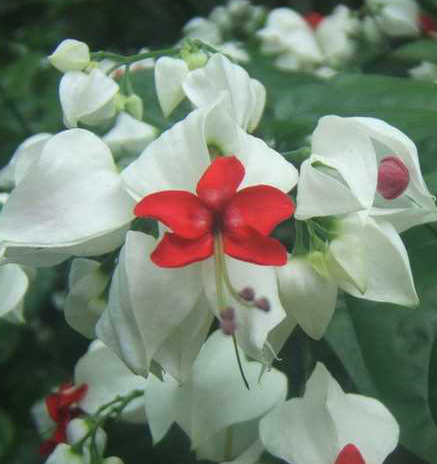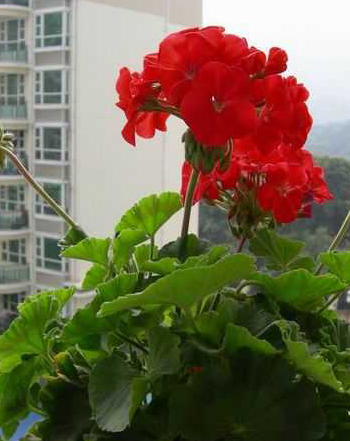What should we pay attention to when cultivating peony?
Peony flowers are large in shape and rich in color. It is cold-resistant and can spend the winter in open fields in most parts of northern China. But the heat resistance is poor, and the growth stops in summer. Like the sun, can also grow and blossom in the shade. Like moist but afraid of waterlogging, suitable for deep, fertile and moist sandy loam with smooth drainage. Low-lying saline-alkali land is not suitable for planting. The main points of cultivation of Paeonia lactiflora are as follows:
The main results are as follows: 1. The planting site should be selected where the leeward is sunny, the soil layer is deep, the terrain is high and dry, and the ploughing depth is more than 30 cm before planting, and fully mature organic fertilizer, bone powder and a small amount of insecticides are applied; ploughing again, it is covered with thin layer soil to avoid root rot caused by direct contact with fertilizer.
2. Put the peony into the hole to make the root system stretch and straighten. Planting should not be too deep or too shallow, and the thickness of the soil above the bud should be 2cm to 3cm. After the soil is covered, the soil is gently compacted and watered thoroughly after planting. Shallow and medium ploughing was carried out the next evening to make the soil well ventilated.
3. After entering the winter in the severe cold area, cultivate the soil 20cm to 25cm thick on the planting hole in order to survive the winter safely. Remove the cultivated soil in time after the soil is thawed in spring. When the new buds germinated in spring, they were fertilized and watered and ploughed to preserve soil moisture.

Paeonia lactiflora
First, watering
It is generally planted from late August to September, early rather than late, and no later than late October at the latest, otherwise the new roots of peony buds will affect the yield and quality of peony. In order to emerge neatly and facilitate management, peony buds should be planted in holes according to their size. The distance between the planting rows is 50 cm × 30 cm, the depth of the hole is 12 cm, and the diameter is 20 cm; the hole is poured with enough water, and then 4 cm thick rotten stable fertilizer is spread at the bottom of the hole, and the overlying soil is 4 cm thick. After compaction, the tip of the peony bud is placed upward into the middle of the hole, and one and two peony buds are placed in each hole. After planting, the soil in each hole is 10ml and 15cm high. Pour enough antifreeze water before overwintering.
2. Soil
Good drainage, peony like cool climate, China's temperate zone to subtropical areas are suitable for cultivation, with spring sprouting, autumn rooting characteristics, in summer. In the hot and hot season, the plant is semi-dormant, like sandy loam with loose fertility and good drainage, and avoid saline-alkali soil. Because peony is a fleshy root, it is resistant to drought but afraid of stagnant water, such as soil consolidation and stagnant water, it is easy to make peony fleshy root rot, so lowland and saline-alkali land are not suitable for cultivation.
Therefore, the ground planting should choose cool and sunny places, pot planting avoid watering too much. The whole dormant period from winter to early spring, the soil should be kept moist, not too dry, but the drainage should be smooth, avoid stagnant water, otherwise the underground root is easy to rot to death.
Third, fertilizer and water
Paeonia lactiflora is a fattening crop. In addition to applying sufficient base fertilizer, topdressing should be applied three times a year from the second year after planting. After the first time of ploughing and weeding in mid-March, 1500 kilograms of human and animal manure fertilizer was applied per mu, and the second and third times were in May and July, respectively. each time, 1500 kg of human and animal manure fertilizer, 25 kg of cake fertilizer, or 40 kg of ternary compound fertilizer was applied per mu. Peony likes to dry and is afraid of waterlogging, so it generally does not need to be watered, but only needs to be irrigated at one time in the case of severe drought. The ditch must be cleared for drainage in the rainy season, otherwise the root will rot and the whole plant will die after flooding for 6 hours.
Control of common diseases in protected cultivation of Paeonia lactiflora
Paeonia lactiflora is not only a traditional famous flower in China, but also one of the flowers with the longest cultivation history. The variety of Paeonia lactiflora is rich, and the flower color and pattern are different, but its florescence is relatively concentrated. In order to make better use of this ornamental plant resource, people have begun to study and make use of facility cultivation technology to prolong the ornamental period of peony and expand its planting and application. One of the key links of peony protected cultivation is the prevention and control of diseases and insect pests, especially the comprehensive control of diseases. Due to the limitation of facility conditions, ventilation and light are generally not as good as the natural environment, so it will lead to some diseases. The common types of peony diseases in protected cultivation are not as many as those naturally planted, but the damage is more serious. In this paper, the common diseases and their control methods in protected cultivation of Paeonia lactiflora are introduced as follows:
Grey mold disease
There are two types of symptoms. One type is that the leaf disease spot is nearly round or irregular, which mostly occurs at the leaf tip and leaf edge, brown or purple brown, with irregular wheel patterns, when the air humidity is too high, gray mildew grows, that is, the conidia of the pathogen; the disease spot on the stem is brown, showing soft rot, and when the base of the stem is killed, it can make the inverted excellent flower part of the plant turn brown, soft rot, and produce gray mildew; the spot sometimes produces black granular sclerotia. The second type is brown disease spot on the edge of the leaf, which causes brown ripple on the leaf edge, soft rot of petiole and pedicel, skin rot, and seed ripening when the pedicel is damaged.
The pathogenic bacteria overwinter with sclerotia in the soil; high temperature and high humidity in protected cultivation are conducive to the formation and spread of conidia; too much nitrogen fertilizer, too dense planting, high humidity and lack of light are easy to be infected by bacteria; when peony greenhouse promotes flower, the disease often causes flower bud atrophy and rot. The disease often occurs in the early stage of leaf expansion when peony is cultivated in protected facilities.
Control method 1) soak the plant with 70% wettable mancozeb powder 300 times solution for 10-15 minutes before planting. (2) in the treatment of cultivation substrate, 70% pentachloronitrobenzene wettable powder and 70% mancozeb were mixed evenly, with 810 grams per square meter. (3) pay attention to ventilation and light, apply appropriate amount of nitrogen fertilizer, irrigate too many times during the leaf expansion period, and remove diseased leaves and diseased plants at any time. (4) the plant can be sprayed with 80% Desen zinc 800-1000 times solution, 70% methyl topiramate 1000 times solution, 50% propranolol or prohydantoin wettable powder 1500 times solution, the smoke method can be used in the initial stage of the disease in the greenhouse. 45% chlorothalonil smoke agent, 10% chlorhexidine smoke agent, 15% chlorpromazine smoke agent, etc., save labor and will not be humidified.
- Prev

How to maintain potted dragon spit beads?
Dragon spit bead for evergreen vine small irrigation. Flowers scattered into clusters, terminal or axillary, calyx white to pink, pentagonal, petals crimson, staminal filaments slender, protruding from the corolla. Summer and autumn flowering. Sexual likes sunlight and warm, humid environment, but afraid of direct light
- Next

How to preserve potted geraniums?
Recently, many friends asked me how to conserve potted geraniums. Here are some of my experiences in conserving potted geraniums: 1. Potted soil. Potted geranium can be cultivated with rotten leaf soil, peat soil plus 1 up to 5 river sand and a small amount of cake fertilizer as base fertilizer.
Related
- Fuxing push coffee new agricultural production and marketing class: lack of small-scale processing plants
- Jujube rice field leisure farm deep ploughing Yilan for five years to create a space for organic food and play
- Nongyu Farm-A trial of organic papaya for brave women with advanced technology
- Four points for attention in the prevention and control of diseases and insect pests of edible fungi
- How to add nutrient solution to Edible Fungi
- Is there any good way to control edible fungus mites?
- Open Inoculation Technology of Edible Fungi
- Is there any clever way to use fertilizer for edible fungus in winter?
- What agents are used to kill the pathogens of edible fungi in the mushroom shed?
- Rapid drying of Edible Fungi

